50 greatest special effects of all time
Time Out ranks the most awe-inducing moments of our dreams and nightmares
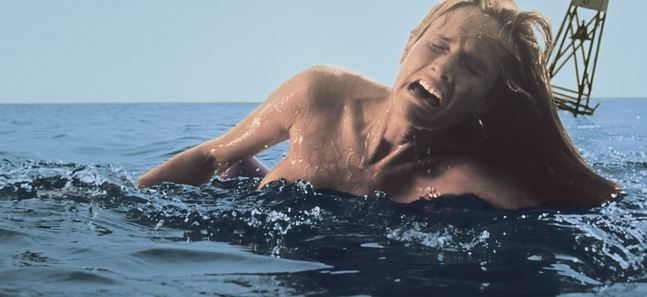
Don't look down... Jaws (1975)
Posted: Thu Aug 11 2011
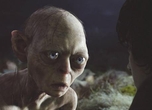
10 | THE LORD OF THE RINGS: THE TWO TOWERS (2002)
Peter Jackson’s massively popular fantasy trilogy has an eye-popping surfeit of special effects, but none is more impressive than Gollum, the diminutive creature with an insatiable lust for the One Ring. Gollum was created from footage of lithe actor Andy Serkis, who performed movements and dialogue on the set and in a motion-capture studio. Animators then used the material as a reference point to digitally mold the mythic villain around him. And unlike Star Wars–prequel punching bag Jar Jar Binks, the result was a CGI character with soul.
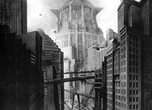
9 | METROPOLIS (1927)
The granddaddy of speculative-fiction films (conceived by the masterful German director Fritz Lang), this classic gave audiences a spectacularly unforgettable vision of a dystopian future – where clueless autocrats live luxuriously while disgruntled workers toil underground. Effects expert Eugen Schüfftan built extraordinary miniatures for the sweepingly varied city vistas and even came up with a trick process involving mirrors that made it seem as if normal-size actors inhabited these Lilliputian sets. The film’s influence stretched from the immediate (Alfred Hitchcock used the mirror technique for his 1929 thriller Blackmail) to many decades later (see our No. 8 choice for a movie that would be unthinkable without Lang’s example).

8 | BLADE RUNNER (1982)
To appreciate the accomplishments of Ridley Scott’s visionary endgame, it’s best to remember that this is a film set on Earth – specifically a ruined Los Angeles swamped with haze and acid rain, emptied of residents and crumbling into a tomblike memorial to a dead civilisation. (Yes, we’re in the future, but not by much.) It wasn’t a project on which model makers could glide their ships in the airless vacuum of outer space. Douglas Trumbull, the legend who worked with Stanley Kubrick on 2001, rose to the occasion, fogging rooms with fine mist to create believable atmospheres. 'Spinners' threw headlights across studio-built cityscapes, while miniature towers belched flames into the sky. Special effects had finally graduated to an exquisite level of depressing mood and dankness.

7 | THE ABYSS (1989)
Up to then, computer-generated imagery in movies had ranged from arcade-game clunky to simply clipped and chilly. Enter James Cameron, who’d heard that Industrial Light & Magic engineers were working on expanding the palette of pixelated realism. The director hired the FX house to design the 'pseudopod' for his underwater adventure epic, and the result – a snakelike stream of water with an expressively human face – astounded everybody. Nobody had ever seen something software-generated rendered with that much texture and dimension, or seem so fluid and lifelike; the scene may have only lasted 75 seconds, but it quickly became a Hollywood game-changer. From the moment that watery creature gazed back at the actors (and us), the CGI era had officially begun.

6 | JAWS (1975)
The first mechanical shark they built sank like a stone in the water, the second one wouldn’t open its mouth, and the third one broke down with such alarming regularity that the movie was nearly scrapped. But once the star of Steven Spielberg’s definitive summer blockbuster – a 25-foot-long great white named Bruce, supposedly after the director’s lawyer – finally reared its toothy head, one could believe they were going to need a bigger boat. Despite one critic comparing the shark to 'a foam-rubber pillow with the zipper open,' the creature that art designer Joe Alves and effects supervisor Bob Mattey came up with remains a doozy of a deep-sea stalker – every phobia about oceanic predators had been rolled up into one fearsome beast. No matter how many times we’ve watched Jaws, that killer prop still makes us afraid to go back into the water.

5 | KING KONG (1933)
Question: How do you make audiences care about a giant, enraged ape that’s marauding around New York City? Answer: You get Willis O’Brien to bring him to life. The legendary stop-motion animator was the one who turned the four Kong models – notably the 24-inch one used for the Gotham scenes – into objects with as much personality as the film’s human protagonists. When you watch Kong, you don’t see a concoction of rabbit fur, foam rubber, aluminium and latex; you see one of the screen’s most indelible characters, a creature capable of sorrow, anger, chivalry, curiosity, lust and, yes, love. O’Brien’s work here would inspire a generation of future FX artists, though the pioneering animator would never top the heights he reached with Kong – nor, for that matter, has anyone else.
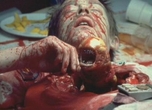
4 | ALIEN (1979)
Is this the most shocking effect in all of movies? Creature features had always relied on monsters, teeth and buckets of blood, but never before had the scare sprung from a major character’s pregnant body – all the more terrible for being a man’s (poor John Hurt.) Conceptually, the idea was explosive, scorching psychosexual terrain. Turning it into reality was the job of morbid Swiss artist H.R. Giger, who designed the 'chest-burster' prop, along with adult versions of the soon-to-be-iconic alien. The stick-mounted puppet was then anchored in a prosthetic torso filled with pressurised squibs. Hurt was partially hidden under the table. The other actors were kept in the dark about what was going to happen; those shrieks are real.
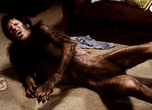
3 | AN AMERICAN WEREWOLF IN LONDON (1981)
Already, our list has a number of transformations – they’re probably the first goal of any aspiring makeup artist hoping to scare up a reputation. No werewolf, though, has enjoyed as loving a birth as the one designed by Rick Baker for John Landis’s well-received horror-comedy. Bristly hairs sprout through foam-moulded skin, snout and paws elongate via ingenious robotic prop-work and, most troublingly, vertebrae realign with a sickening thunk. Tempting disaster, the whole sequence takes place in a well-lit living room, allowing for zero departure from realism. (Elsewhere, Baker turned supporting actor Griffin Dunne into a dead-yet-chatty mess.) Viewers were stunned and the Oscars had to take note, creating an entire category, Best Makeup, for Baker to win.

2 | 2001: A SPACE ODYSSEY (1968)
Its tag line promised 'the ultimate trip,' and thanks to one hell of an interstellar-overdrive finale, Stanley Kubrick’s sci-fi opus certainly kept its word. Once Keir Dullea boldly goes where no man has gone before ('My God…it’s full of stars'), viewers are treated to a hyperspace ride through pulsing lights, swirling nebulae and cosmic debris that was unlike anything seen on screen before. Award-winning special-effects maestro Douglas Trumbull utilised a slew of different techniques to achieve this stunning sequence, from the low-tech (dropping paint into black water) to the highly advanced (shooting slit-scan images inside rotating drums). Though 2001 contains a host of other FX innovations (Kubrick’s envelope-pushing use of front projection, those miniature spaceships, etc.), it’s Trumbull’s 'Star Gate' climax that rightly remains the movie’s mind-blowing pinnacle, regardless of whether you’ve indulged in recreational pharmaceuticals.
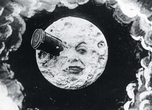
1 | 'A TRIP TO THE MOON' (1902)
We go way back – more than a century – to reach to the pinnacle of special effects: the very first science-fiction film and the forgotten repository of a worldwide spell of enchantment. Any attention we can throw to Georges Méliès’s 14-minute silent, a masterly bonbon of winking humor and mysterious loveliness, we will. (Martin Scorsese will be doing his part to right the historical record in this autumn’s Hugo, a children’s adventure rooted in the real-life story of Méliès himself.) The filmmaker’s pioneering effects included double exposure, forced perspective seemingly spanning thousands of miles, animation and dreamlike prop work. We've embedded it below; go in with an open mind. The vibe isn’t realism, but rather, the giddy kick of an unhinged bedtime story. Which is exactly what the best special effects do: turn us, once again, into agog children.
Tweets
- About Us |
- Work for Time Out |
- Send us info |
- Advertising |
- Mobile edition |
- Terms & Conditions |
- Privacy policy |
- Contact Us
Copyright © 2014 Time Out Tokyo










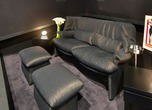

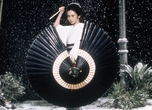

Add your comment